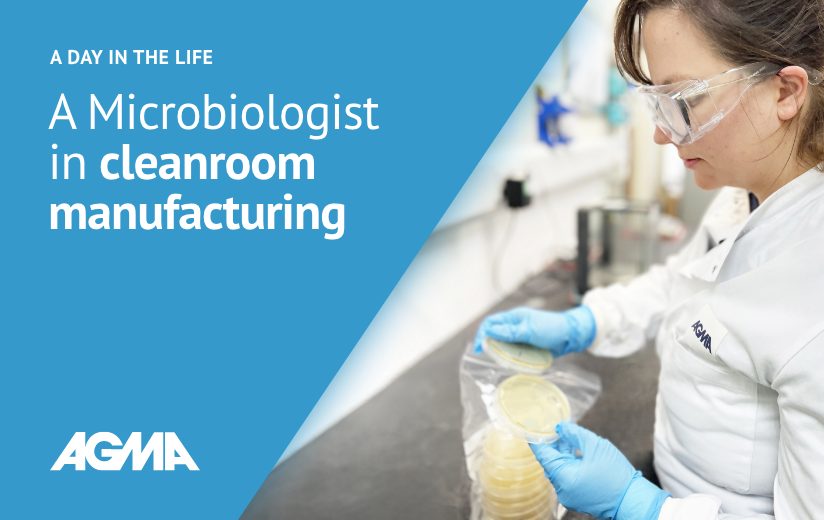A microbiologist plays a critical role in cleanroom manufacturing, with responsibilities such as monitoring microbial contamination, ensuring compliance with regulatory standards, and implementing effective cleaning regimes.
Hailing from Venice, Italy, our Microbiologist and Environmental Monitoring Specialist attained a BSc in Biology (Ecological Curriculum) followed by a MSc in Agri-food Technology and Industrial Biotransformation. Upon attaining a MSC decided to move to the UK where she received a master’s degree in biotechnology for Environmental Sustainability at Edinburgh Napier University. Gaining these qualifications immediately led to a job as an Organic Chemistry Analyst for 4 years, followed by a Microbiology Analyst role, culminating in the role of Microbiologist in cleanroom manufacturing at AGMA.
Here’s a breakdown of the day in the life of a Microbiologist in cleanroom manufacturing:
- Microbial sampling and monitoring:
– Environmental Monitoring (EM): Using methods to achieve a contamination-free environment by adhering to GMP best-practice and demonstrating control over both viable and non-viable particles in critical areas.
– A Microbiological Environmental Monitoring (MEM) programme: Carrying out methods such as classical microbiological methods, which require cultivation and isolation of microorganisms. This includes air and surface sampling, as well as personnel, water and utility monitoring.
- Data analysis and trending
– Microbial data: Analysing microbial data from environmental monitoring and tracking trends over time in order to be able to identify potential issues with contamination control.
– Alert and action limits: Establishing and enforcing alert and action limits for microbial counts based on cleanroom classifications. Where microbial levels to exceed these limits, they can then be investigated and action taken to correct the levels.
- Root cause analysis and investigations
– Common contamination causes: Researching potential contamination causes such as humans, airflow, ventilation, water and process equipment, materials and consumables.
To find out more about hidden sources of contamination, check out Cleanroom Technology’s blog.
– Contamination detection: Investigations to identify potential contamination sources such as reviewing cleaning SOPs, personnel practices, equipment sterility, or air handling systems.
– Root cause analysis: Conducting thorough analysis to determine any corrective and preventative actions required reporting recommended actions to prevent future recurrence.
- Aseptic techniques and training: Teaching cleanroom personnel aseptic techniques, gowning, and handling procedures to ensure contamination risks are low. This involves informing staff of environmental monitoring protocols and the importance of the strictest hygiene and cleaning protocols in controlled environments.
- Cleanroom validation and qualification: Assisting engineers and quality assurance teams with the qualification and validation of cleanroom suites, including validating air handling systems, cleaning methods and sterilising processes in order to meet microbial standards prior to and throughout the production process.
- Regulatory compliance and documentation: Producing audit-ready, compliant documentation of environmental monitoring activities by preparing reports, logging data, and creating standard operating procedures (SOPs) for environmental monitoring activities.
- Continuous product and process improvement and risk management: Evaluating new technologies, updating cleaning and disinfection protocols, and identifying any areas for enhancing in contamination control., as well as constantly evaluating potential risks related to microbial contamination in order to implement control and compliance measures and reduce risks.
- Sterility assurance: Ensuring the integrity of each cleanroom manufacturing suite throughout the manufacturing process of our solutions, impregnated wipes and sprays to ensure they’re safe for use.
Our Microbiologist plays a crucial role in AGMA’s cleanroom manufacturing, making sure we maintain a contamination-free environment and ensuring our products meet the highest international quality and safety standards.


